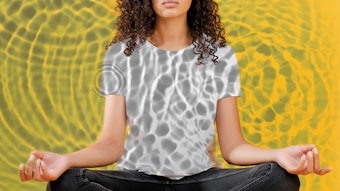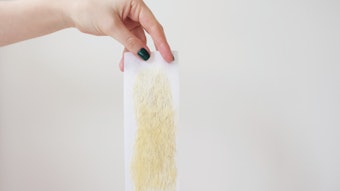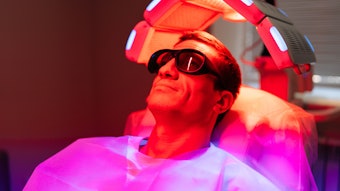
Researchers say a new study from the University of Minnesota's School of Public Health and Masonic Cancer Center definitively links the use of indoor tanning devices to increased risk of melanoma, the most serious form of skin cancer.
This research study involving 2,268 Minnesotans is the largest of its kind. It found:
- People who use any type of tanning bed for any amount of time are 74% more likely to develop melanoma, and;
- Frequent users of indoor tanning beds are 2.5 to 3 times more likely to develop melanoma than those who never use tanning devices.
The study defines frequent uses as people who used indoor tanning for 50 plus hours, more than 100 sessions, or for 10-plus years. This increased risk applies similarly to all ages and genders.
DeAnn Lazovich, PhD, led the research team on this study. Lazovich is an associate professor of epidemiology with the School of Public Health and co-leader of the Masonic Cancer Center's Prevention and Etiology Research Program. The study findings were published online on May 27 in Cancer Epidemiology, Biomarkers and Prevention, a journal of the American Association for Cancer Research.
"We found that it didn't matter the type of tanning device used; there was no safe tanning device," Lazovich said. "We also found—and this is new data—that the risk of getting melanoma is associated more with how much a person tans and not the age at which a person starts using tanning devices. Risk rises with frequency of use, regardless of age, gender, or device."
Melanoma is one of the fastest increasing cancers across the United States and in Minnesota. About 69,000 people in the United States will be diagnosed with melanoma this year; nearly 1,000 of those people will be Minnesotans. Although melanoma accounts for only about 4% of all skin cancer, it causes about 79% of all deaths from skin cancer. In a more advanced state, melanoma is especially difficult to successfully treat.
Before this study, indoor tanning has been only weakly associated with melanoma risk, Lazovich said.
"Most reports were not able to adjust for sun exposure, confirm a dose-response, or examine specific tanning devices," she said. "Our population-based, case-control study was conducted to address these limitations."
Lazovich and her colleagues assessed Minnesota cases of invasive cutaneous melanoma diagnosed between 2004 and 2007 at ages 25–59. The study participants and results included:
- 1,167 people diagnosed with melanoma and 1,101 people (control group) without melanoma. 62.9% of group with melanoma and 51.1% of control group had tanned indoors.
- Melanoma risk was about three times greater among users of UVB-enhanced devices and 4.4 times greater for UVA-emitting devices.
- Risk increased with use, defined as 10 or more years, 50 or more hours, or more than 100 sessions.
Funding for this research was provided by the National Cancer Institute and the American Cancer Society.
1.DeAnn Lazovich, Rachel Isaksson Vogel, Marianne Berwick, Martin A. Weinstock, Kristin E. Anderson, Erin M. Warshaw. Indoor Tanning and Risk of Melanoma: A Case-Control Study in a Highly Exposed Population. Cancer Epidemiology, Biomarkers and Prevention, 2010; 1055-9965.EPI-09-1249 DOI: 10.1158/1055-9965.EPI-09-1249
From www.sciencedaily.com, May 27, 2010.
Skin Inc. magazine received the following rebuttal to this story from Steven Gilroy, executive director of the Joint Canadian Tanning Association:
We disagree with the conclusion that the Lazovich study definitely links indoor tanning with melanoma. This study has many irregularities including a key conflict of interest. Read more here:
What the study does provide is proof that individuals must be skin typed prior to indoor tanning (or receiving outdoor UV exposure, as well). This is something that the Joint Canadian Tanning Association takes very seriously and we have recently developed a new Web site – www.skintype.ca to help people determine their skin type and tan in a safer manner.
If you go to the Lazovich study and review the physical traits of the study group you will find the following OR (odds ratios) reported:
Moles: Many – 13.81 OR; Some – 6.35; Few – 2.76
Skin Color: Very Fair – 5.50; Fair – 3.63; Light Olive – 1.95
Natural Hair Color: Red – 3.53; Blonde - 2.17; Light Brown – 1.22
Eye Color: Gray/Blue – 1.46; Green – 1.52; Hazel – 1.24; Brown – 1
Freckles: Many – 1.90
Ever Used Indoor Tanning: 1.74
Burns from Indoor Tanning: 2.28
Note: You should never burn from indoor tanning. In this study 22% of the cases reported burning in a tanning bed and 14% of the controls. 1 in 5 people burned tanning indoors? This is questionable.
What does this tell us? Skin type 1s who should never tan usually have – very fair skin, lots of moles/freckles, red/blonde hair and blue/green eyes. You can see from the odds ratios reported in the study that this holds true.
Here is what New Zealand is reporting: https://www.scoop.co.nz/stories/BU1005/S00865.htm










